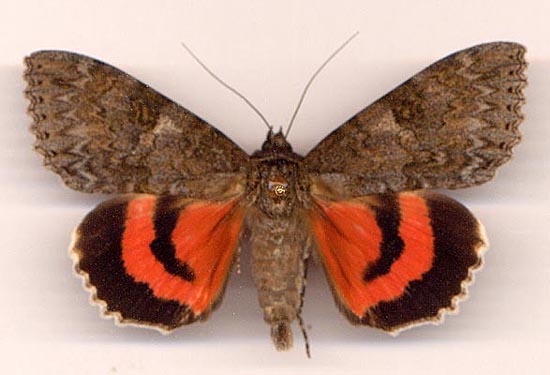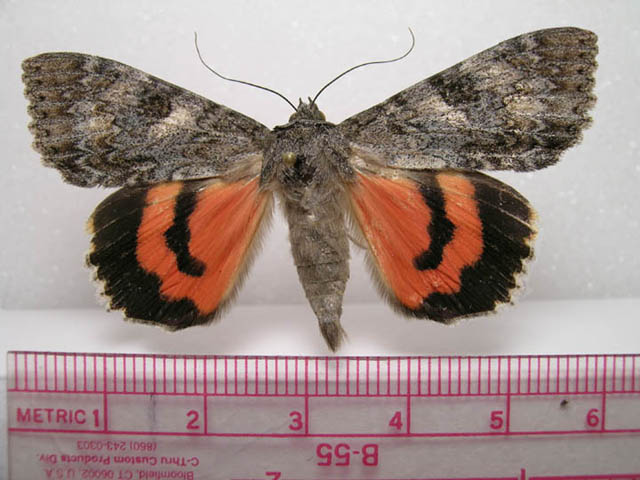DISTRIBUTION: Catocala faustina
(wingspan: approximately 58mm), flies from Colorado west to
California and north
through Washington to British Columbia.
It has also been reported in
Idaho,
Montana,
Nevada,
Oregon,
Wyoming and
Utah.
Specimens from the coastal areas of northern California, Oregon,
Washington and British Columbia are classified as C. faustina allusa.
C. faustina allusa blends with C. faustina cleopatra
in northwestern California, and with C. faustina faustina in the Rocky Mountains of
Idaho, Wyoming and Montana.
The hindwing inner band is narrow and
truncated well before the inner margin. The two "teeth" in the forewing postmedial line
are relatively short. |  |


